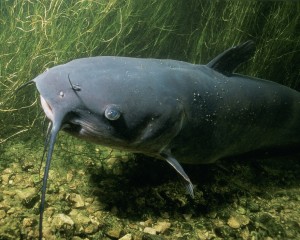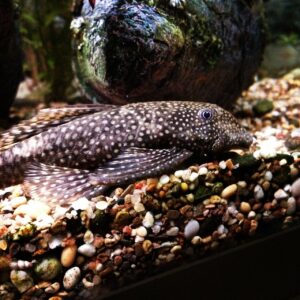Aquaculture or fish farming has been gaining popularity in the United States as a profitable method of producing seafood. Start your own for-profit fish farm, whether you want to start small and raise fish in your home pond, or indoors in containers, or go big with commercial ponds.
Over the last couple of decades, the demand for seafood has increased around the world and it’s still increasing. This is due to rapid urbanization around the globe. As people’s living standards improve, they tend to buy more seafood and meat for their diet.
Many experts believe that the demand for seafood will put further strain on an already overfished natural and wild fish supply around the world. Aquaculture can be a profitable method to produce more seafood and meet this increasing demand. It would also help the natural fish stocks to recover and regenerate.
Profit from Catfish farming
African catfish (Clarias Gariepinus) farming could be a profitable business and could be an important source of protein in diet. Catfish is a warm water fish and can be grown in natural ponds, fish tanks, raceways aquaculture, and in backyard ponds for profit. They reach a marketable size of 2.5 to5 pounds within a very short period of time. They can reach 1-2 pounds after 18 to 36 months of hatching.
Let’s look at some of the most efficient ways you could raise catfish in your pond or channels or cages for maximizing your profit.
Producing Marketable Sized Catfish fast
 There are several factors that affect the growth of your catfish. Growth of your fish and profit will depend on how efficiently you manage your farm, the water quality, disease control, managing your costs, and the number of fish you produce for your inputs or per acre of your land. Your profits from a catfish farm will depend largely on how fast you grow them to marketable size. The faster they grow, the sooner you can harvest them for profit.
There are several factors that affect the growth of your catfish. Growth of your fish and profit will depend on how efficiently you manage your farm, the water quality, disease control, managing your costs, and the number of fish you produce for your inputs or per acre of your land. Your profits from a catfish farm will depend largely on how fast you grow them to marketable size. The faster they grow, the sooner you can harvest them for profit.
Here is a list of factors affecting your fish farm production:
-
Temperature
-
Flowing water
-
Pond Balance
-
Fish feed
-
Water quality & fish health
Temperature
Catfish grow best in warm water between 83-86o F. You can begin spawning of your fish in the spring when the water temperature rises above 70 o F. You may collect juvenile fish from a nearby hatchery.
Flowing water
Catfish grow more rapidly with flowing water or raceway aquaculture. However, they can also thrive in fish tanks and reservoirs. They do not grow well in small ponds because of the predators, especially if bass and bluegill are present which feed on young catfish. Catfish tend to grow faster in rivers where cage based aquaculture culture is possible.
Pond balance
Maintaining a balance in your pond is important because if you have fish growing in higher density, it could give rise to toxic water and pollution. Your fish will get sick and grow less. Two years following the stocking, your fish will reach its limit and harvest sized fish have to be taken out. Remove all undesirable fish and materials from your pond.
Fish feed
In a well-balanced pond, the natural ecosystem of the pond can feed your fish after you have set up your pond and added nutrients to the soil. In a fertile land, plants and insects will provide food for your fish. For rapid growth, use a nutritionally balanced catfish feed. Your catfish fingerlings will grow faster if you feed them regularly in the beginning of production season, they will grow the right size for harvesting by autumn. However, feeding too much will result in poor water quality and it will also increase your feeding costs.
Water quality & fish health
 Water quality plays an important role in raising healthy fish. A circulating water system will keep your water clean but also check for the right pH balance. Your water should have a pH between 6.5-9.0. If the pH is too low, add limestone to your pond. Also check for dissolved impurities and oxygen level of your water. Both physical and chemical factors play important role in rising catfish faster.
Water quality plays an important role in raising healthy fish. A circulating water system will keep your water clean but also check for the right pH balance. Your water should have a pH between 6.5-9.0. If the pH is too low, add limestone to your pond. Also check for dissolved impurities and oxygen level of your water. Both physical and chemical factors play important role in rising catfish faster.
The ideal density for intensive farming could be between 1,500 to 5,000 lb/acre, with four feed pond depth. For small scale farms 1,000-1,500 lb/acre is ideal. For faster growth, you will need to supply aerostation and regular supply of food.
Check for water contamination by using water tests and soil tests. Also look for sick fish in your pond. There are several signs for checking illnesses in fish. You may consult your local authorities and agricultural centers if you have any concerns about your fish health.
Did you find this blog informative? We would appreciate your comments and feedback on it. So, add your comment in the comment box below, or on our Facebook page.
Click here to book a meeting with us. You may also call our office at (303) 495-3705 to get a hold of us.
Source: Worldwide Aquaculture
Related articles and resources:
- Starting A Catfish Farming Business – Step By Step Guide | WorldWide Aquaculture
- Simple Aquaculture Methods – A Guide to Fish Farming
- Quick & Easy Fish Farming – the Raceway Aquaculture System | WorldWide Aquaculture\
- Cage Based Aquaculture
- Understanding Water Quality for Aquaculture
- Understanding the Chemical Factors of Water in Aquaculture



